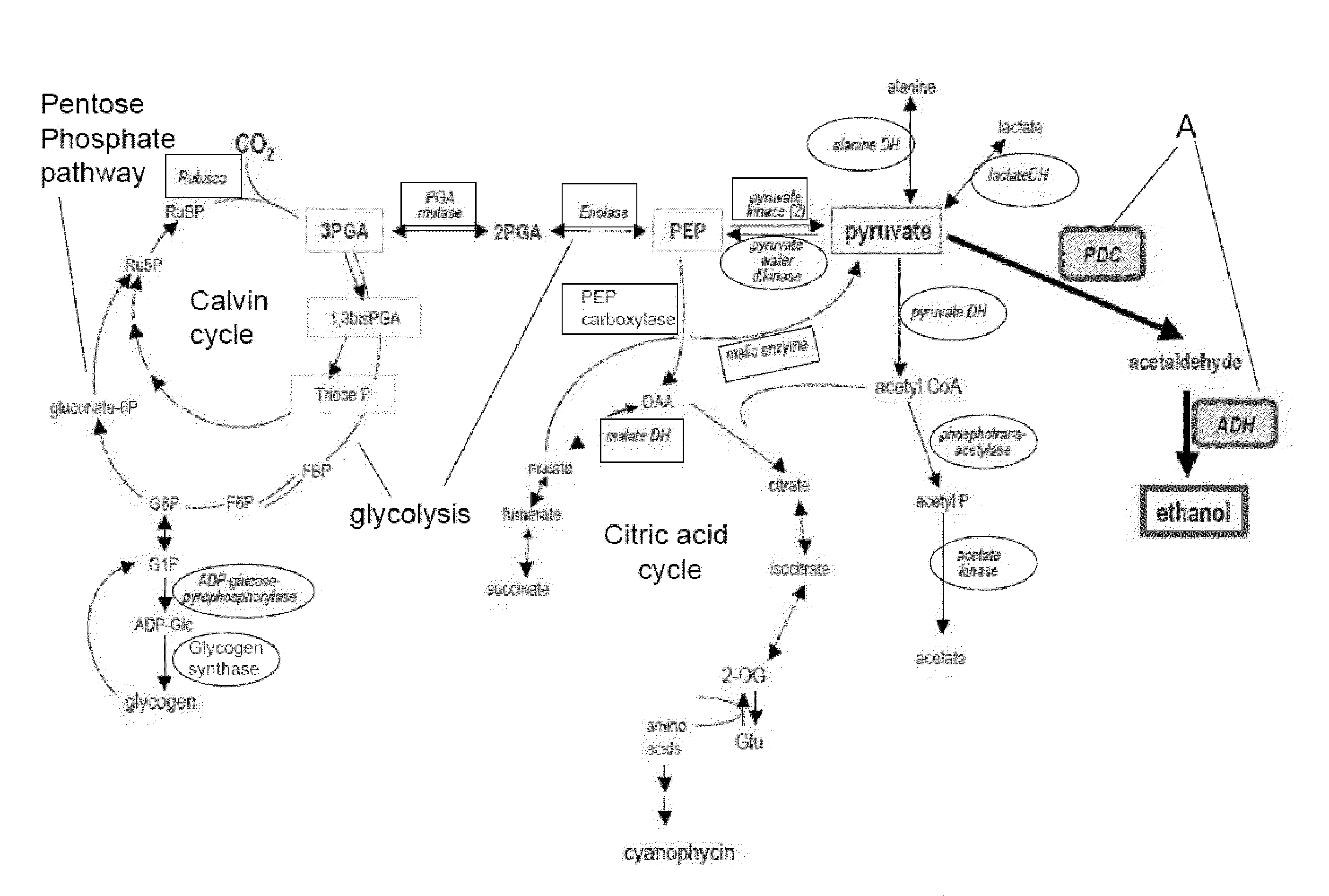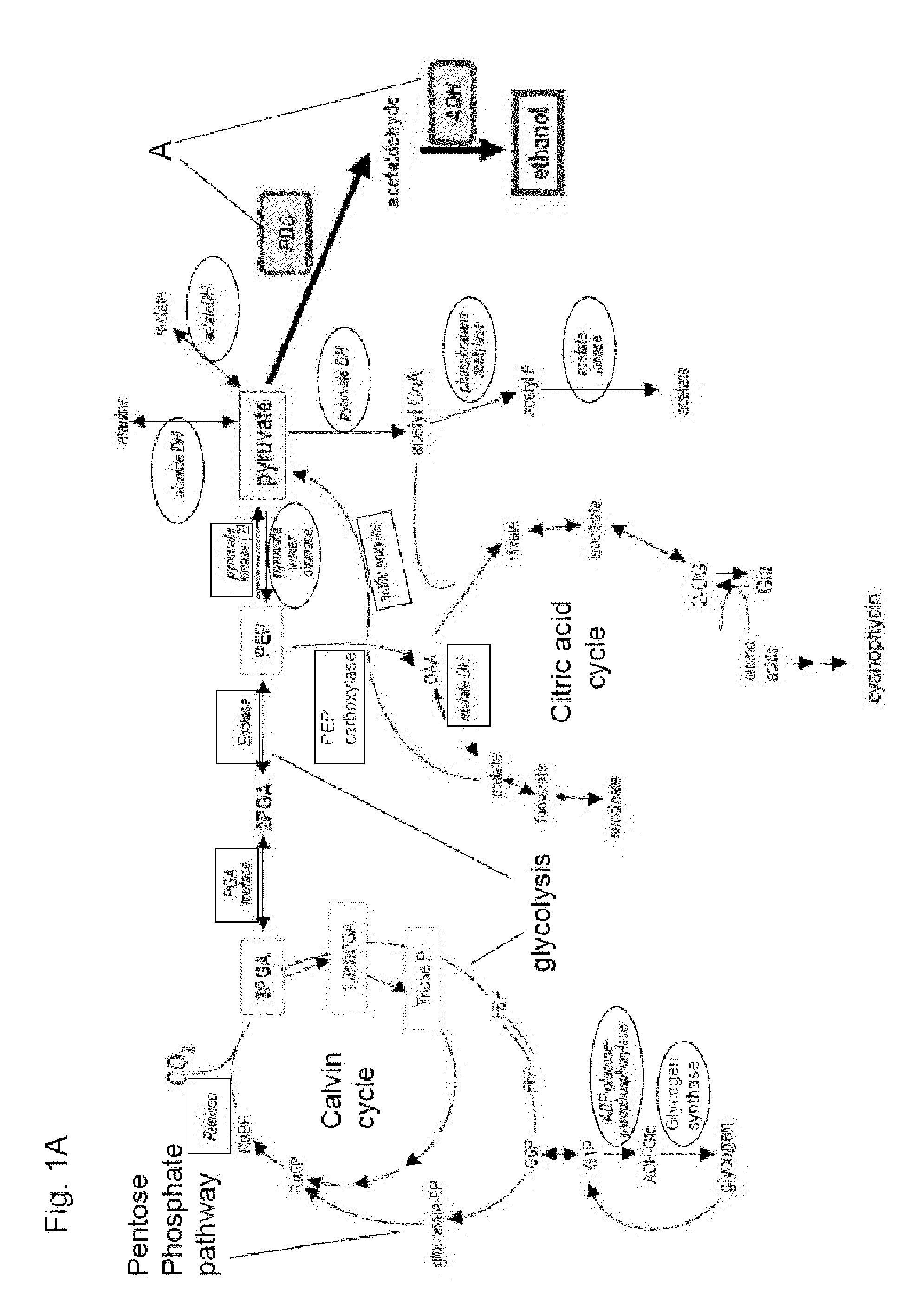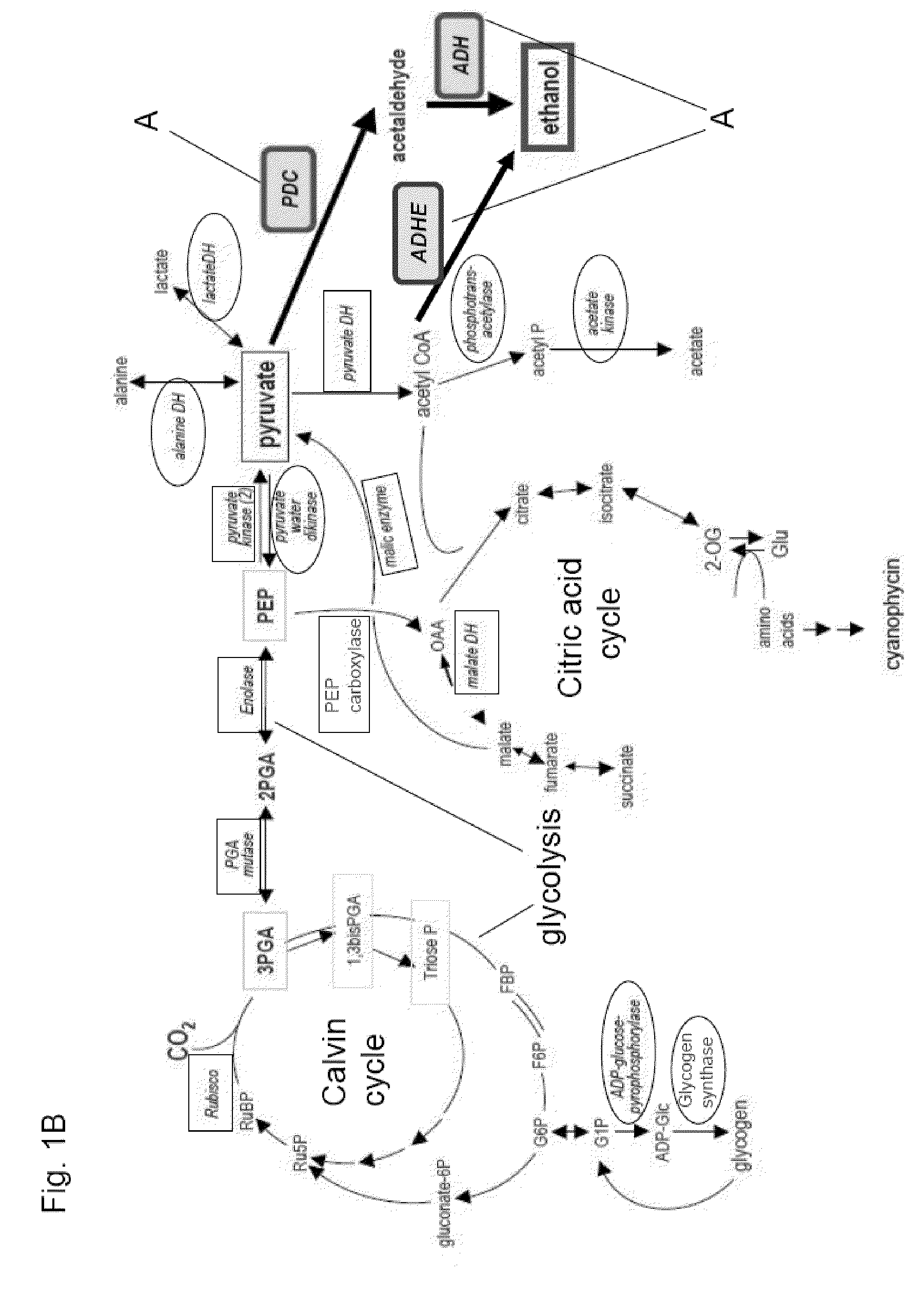Genetically Modified Cyanobacteria for the Production of Ethanol
a technology of cyanobacteria and ethanol, which is applied in the field of direct production of ethanol, can solve the problems of complex problem of genetic engineering, limitation of the ability to modify the genetics of specific species, and contributing to rising food prices and causing deforestation, so as to increase the level of acetyl-coa biosynthesis, increase the rate of synthesis, and increase the level of metabolic intermediate biosynthesis
- Summary
- Abstract
- Description
- Claims
- Application Information
AI Technical Summary
Benefits of technology
Problems solved by technology
Method used
Image
Examples
embodiments
[0291]It is one object of embodiments of the invention to provide a genetically modified host cell, which can be used for production of ethanol.
[0292]This object is reached by providing a genetically modified host cell according to base claim 1. Further embodiments of the genetically modified host cell, as well as constructs for producing the genetically modified host cells and a method for producing ethanol using the genetically modified host cells are subject matters of further claims.
[0293]Embodiment of genetic knockout and / or overexpression of metabolic pathway enzymes
[0294]In a first aspect the invention provides a genetically modified photoautotrophic, ethanol producing host cell comprising:[0295]at least one first genetic modification changing the enzymatic activity or affinity of an endogenous host cell enzyme,[0296]the first genetic modification resulting in an enhanced level of biosynthesis of acetaldehyde, pyruvate, acetyl-CoA or precursors thereof compared to the respect...
PUM
| Property | Measurement | Unit |
|---|---|---|
| pH | aaaaa | aaaaa |
| affinity | aaaaa | aaaaa |
| energy | aaaaa | aaaaa |
Abstract
Description
Claims
Application Information
 Login to View More
Login to View More - R&D
- Intellectual Property
- Life Sciences
- Materials
- Tech Scout
- Unparalleled Data Quality
- Higher Quality Content
- 60% Fewer Hallucinations
Browse by: Latest US Patents, China's latest patents, Technical Efficacy Thesaurus, Application Domain, Technology Topic, Popular Technical Reports.
© 2025 PatSnap. All rights reserved.Legal|Privacy policy|Modern Slavery Act Transparency Statement|Sitemap|About US| Contact US: help@patsnap.com



